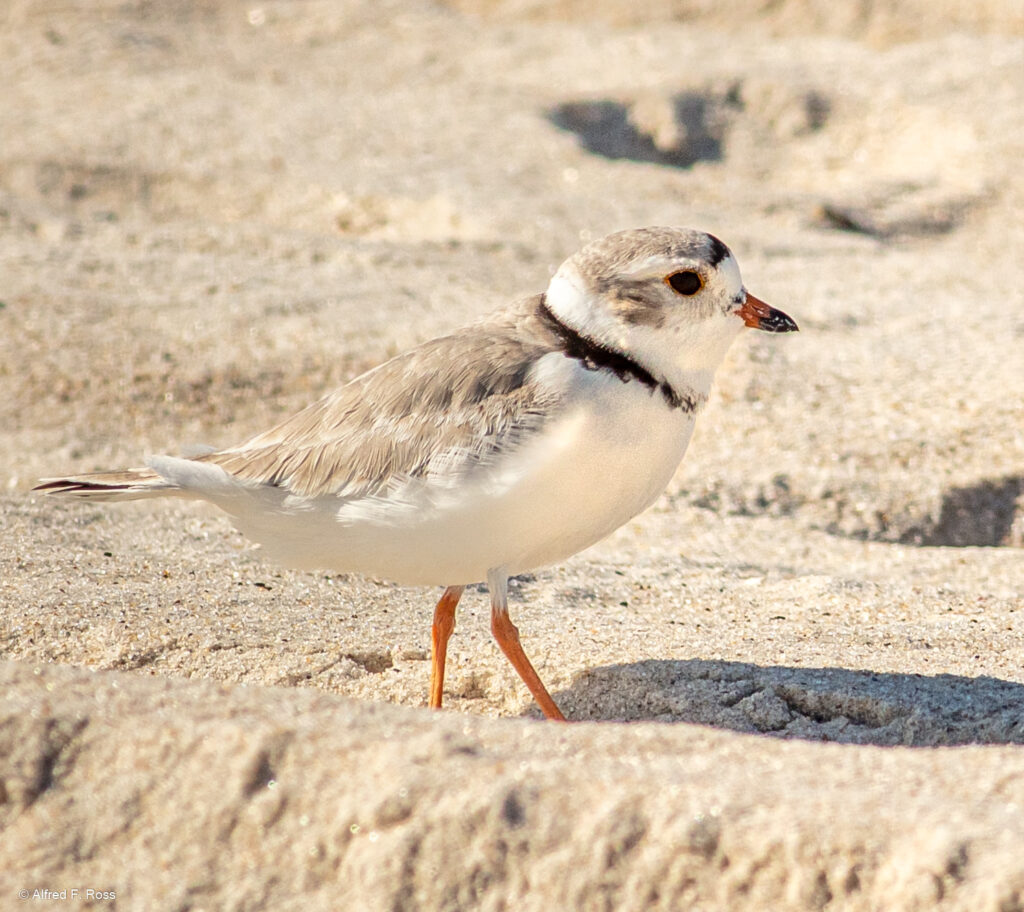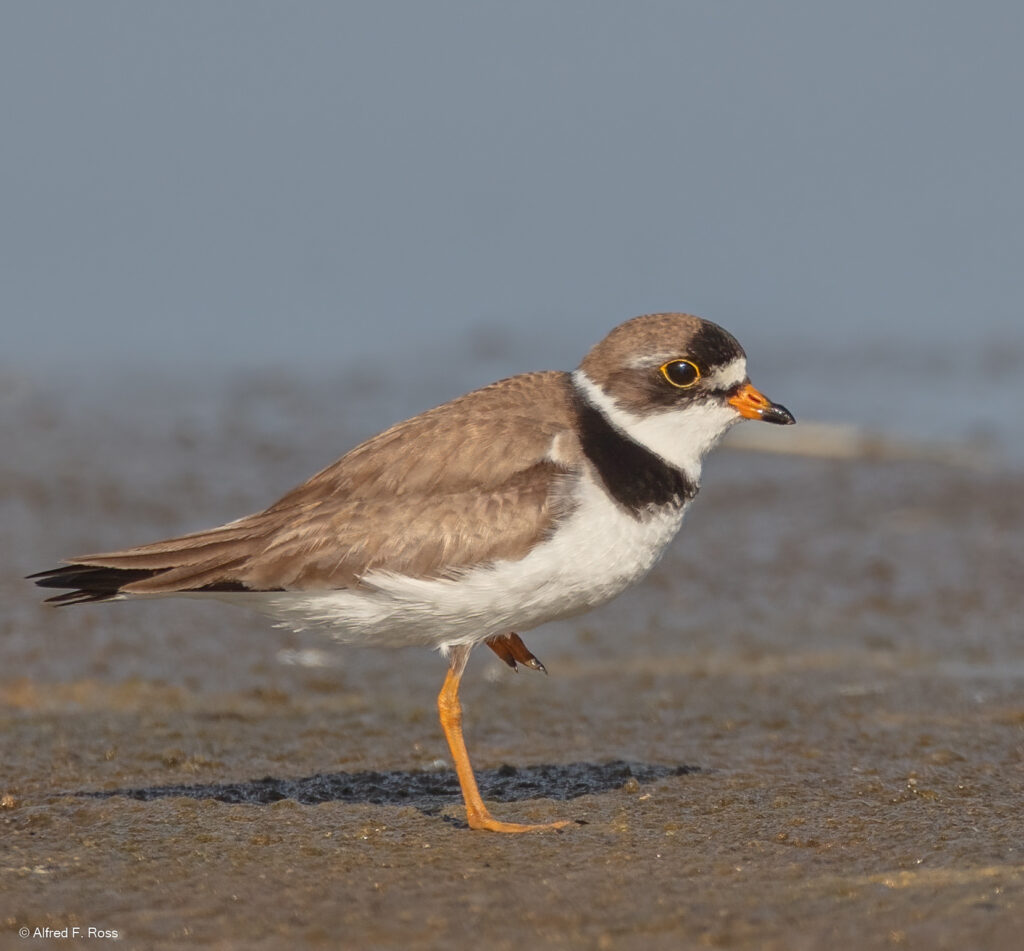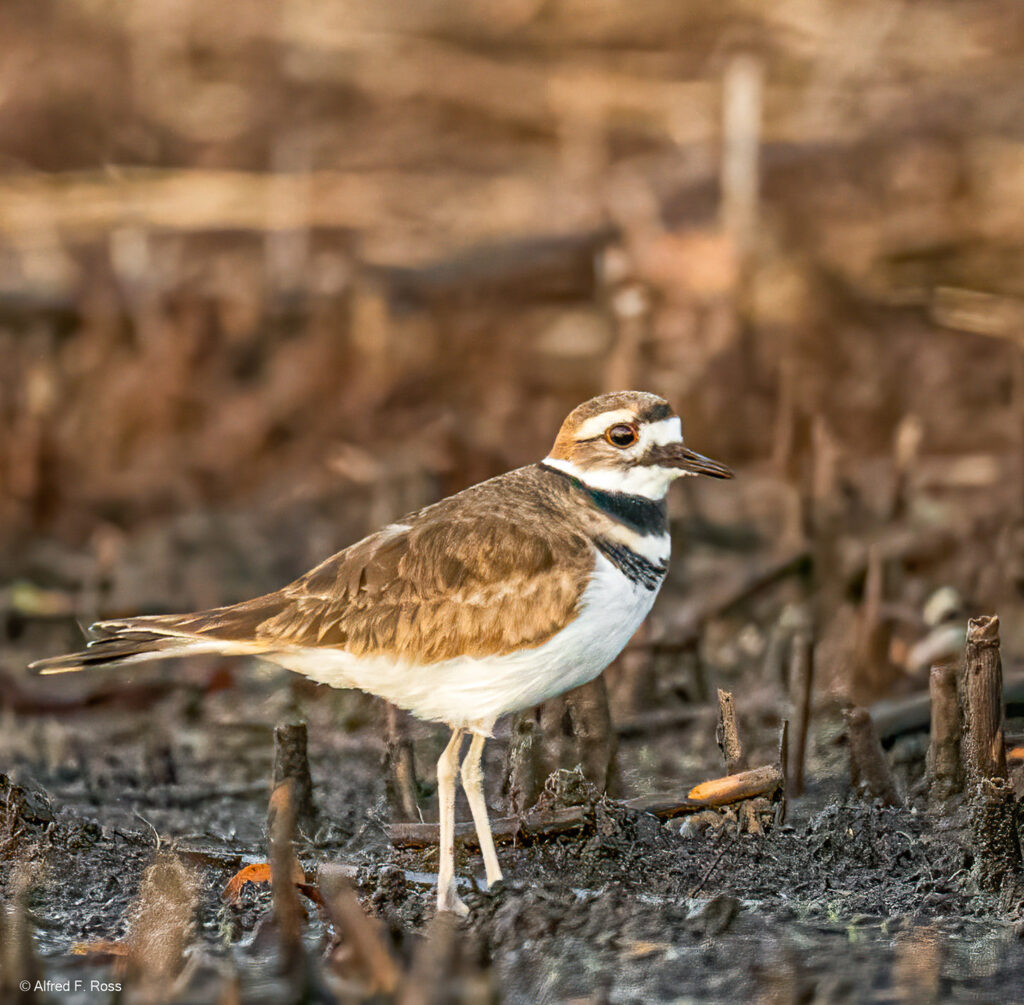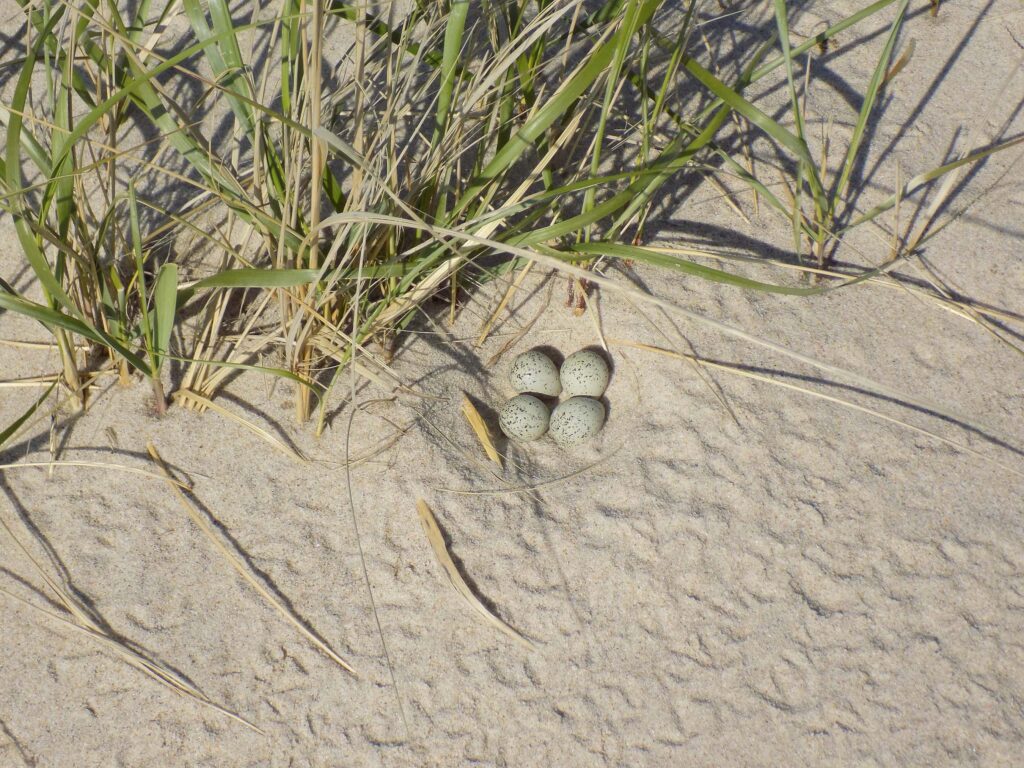Let’s all just get along
It is hard to imagine any other bird that takes more abuse than the piping plover (Charadrius melodus), a federally protected bird that nests on our beaches during the summer. Forget the fact that it has to raise a family right on the beach, while we recreate. I am unaware of any other bird species that has its own bumper sticker “Piping Plover Tastes like Chicken!”
When discussions turn to plovers, they can be pretty volatile, and many erroneous statements are made. The birds are highly camouflaged and are hard to see on the beach. Many people misidentify them.

They are not in flocks
One argument is that there are many of them. “I saw a whole flock of them just yesterday.” The truth is that piping plovers aren’t in flocks. They are usually seen as pairs or singly running up and down the beach. Those flocks of shorebirds could be sanderlings which run with the waves pecking the sand for worms and crustaceans OR they might be a close relative, the semipalmated plover (Charadrius semipalmatus) which migrates through East Hampton but does not nest here. Semipalmated plovers can easily be mistaken for the piping plover.

They are very rare
According to the New York State Department of Environmental Conservation (NYSDEC), in 2017 there were only 800 pairs of piping plover nesting on the Atlantic Coast. That’s not a lot. The United States Fish & Wildlife Service (USF&W) will only remove the species from the endangered species list when the Atlantic Coast population reaches 2,000 pairs for five years and a 5-year average productivity rate of 1.5 chicks/pair is reached. We have a long way to go.
They only live on the beach
A while back someone said to me that they saw piping plovers nesting on the edge of a plowed field. They did see a plover, but again it was a close relative, the killdeer (Charadrius vociferus), and not the piping plover. Killdeer are very common over a much broader range of habitat.

Another argument is that if the nests are so vulnerable, why don’t we move them? While the US Fish & Wildlife Service and many State Wildlife Agencies have done successful captive rearing and reintroduction programs (the Bald Eagle and Wild Turkey for example), captive rearing is very expensive and difficult and has not been tried with the Atlantic population of piping plovers.

The best thing we can do to protect piping plovers and help them on the road to recovery is to respect their nesting and feeding areas during the five months they are here by staying away from them and keeping our dogs, cars, kids, and trash away from that limited area of the beach. Bear in mind that the piping plover spends its winters in Florida, the Gulf Coast, and the Bahamas—some of the same places we like to winter as well. These wintering areas also face many similar threats and others such as offshore oil development. (The Deepwater Horizon spill impacted wintering plovers for example). So, both the breeding and wintering grounds of this species are subject to high levels of disturbance.
In East Hampton, the Town Natural Resources Department is in charge of the piping plover program, and they do an excellent job of monitoring and putting up fences to protect eggs and chicks once the plovers have nested in May.
Last year, Georgica Pond’s populations (two subpopulations) of piping plover represented 18% of the entire Town’s birds and contributed 20 % to the total number of fledged chicks.
Steve Papa, the Senior Endangered Species Biologist for the United States Fish and Wildlife Service on Long Island provided this larger context. “In 2021, the piping plover population on Long Island was 464 pairs, and the number of chicks fledged per pair was 1.30. However, the 2021 population is still less than the levels reached in 2008 and 2009 and illustrates the large population fluctuations this species can experience in response to habitat conditions and disturbance levels. The Service is extremely appreciative of the efforts of all our local, state and federal partners as we work together to recover the species.”
How you can help
By keeping disturbance away from their nesting areas and removing trash so that predators are not attracted, we can make a difference. Improving the water quality of Georgica Pond will also support the invertebrates and other marine life that the plovers feed on.
We look forward to welcoming you back to the pond along with the piping plovers, osprey, and other migratory birds when they return in Spring.
